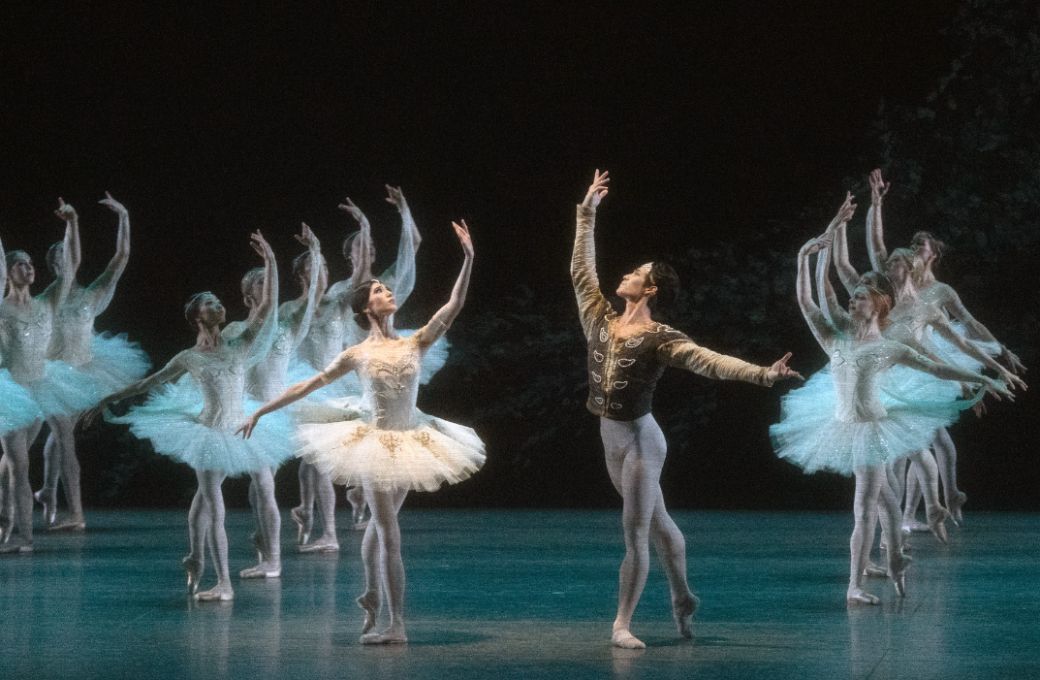American Ballet Theatre’s Fall Season continued with the program that was sold out all the way to the fifth ring: its highly anticipated “ABT@85: Classics to the Contemporary” program, which featured the Kingdom of the Shades from La Bayadère, two brief pas de deux – Sir Frederick Ashton’s Rhapsody pas de deux and Victor Gsovsky’s Grand Pas Classique, and finally the third act of The Sleeping Beauty. It was certainly the program I was most looking forward to.

The program started with Kingdom of the Shades. This is one of the most challenging tests for a corps de ballet. They all have to come down a ramp and slowly step into arabesque plié. They repeat the same step 24 times (in some companies it is 32). It requires unison, timing, but also a certain freedom. If you’ve ever seen the Mariinsky or Bolshoi Ballet do this scene, you’ll notice how free their upper bodies are as they descend down the ramp. Lack of uniformity is instantly noticeable to even the most casual viewers.
The very first shade wobbled in her arabesque, and that set the tone for the entire scene. You just kept noticing wobbly legs, tense upper bodies, constant gear-shifting, arms in different directions. They got through it, but it didn’t have the hypnotic quality it is supposed to have.
The leads were better. Chloe Misseldine and Joo Won Ahn were both suited to their roles. Ahn has enormous elevation, with double assemblés that fly through the air. Misseldine looks like a Nikya: jet black hair, long tapered arms and legs. When she unfurls her leg in developpé it makes a gorgeous shape. Misseldine did come to grief in the scarf duet pirouettes en arabesque, but it was a lovely debut and made me want to see her in the full-length La Bayadère.
The solo Shades were also great. Léa Fleytoux sailed through the diagonal of relevés in the first variation; Fangqi Li was neat and precise in the second variation, with its difficult exposed developpés and Elisabeth Beyer had nice cabrioles in the final variation.
The middle part of the program was puzzling. Herman Cornejo and Léa Fleytoux performed the Rhapsody pas de deux that was … three minutes long. Nice, but too brief to make an impression. SunMi Park and Michael de la Nuez then danced the gala staple Grand Pas Classique. Although both of them were fine, neither had the kind of dazzling technique to make this pas de deux work. This pas de deux needs virtuosos.
The wedding act of Susan Jaffe's The Sleeping Beauty was supposed to crown the evening off in a blaze of classical glory, but instead was rather awkward and anti-climactic. The costumes and sets were recycled from the ill-fated Kirkland/McKenzie production. Both looked old and drab. The titles of the dances were odd too. There was a “Rose Pas de Trois” which had the same music and steps as the usual Jewels pas de trois.
The Sleeping Beauty had one spectacular performance: Takumi Miyake as Bluebird. This is a role for the high flyers and Miyake certainly has the biggest, highest, lightest jumps. In the diagonal of brisés, it looked like his feet never touched the floor. His partner Yoon Jung Seo was a delightful Princess Florine.
The wedding pas de deux with Isabella Boylston and Calvin Royal III was a big let down after Bluebird. Royal struggled in Prince Desiré’s variations. He had trouble making it around the stage in a manège. Boylston was solid technically, but there is a lack of harmony in her épaulement that is very noticeable in this ballet. The whole pas de deux just felt perfunctory, like two dancers just getting through it.
So how did ABT do in these pure, classical ballets? Mixed. The old story at ABT: excellent principals and soloists, but not enough depth to put across works that require incredible corps de ballet precision.


